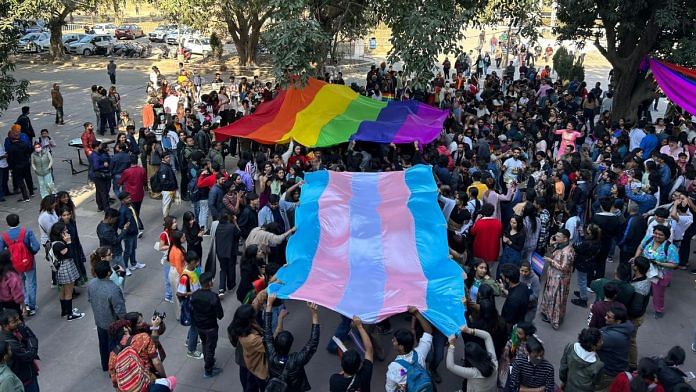Unlike the typical vibe of pride parades in India, Chandigarh enacted more cultural extravaganza than cry against injustice.
The history of LGBT+ parades and the stigma that the community has faced for centuries, makes pride essentially a political protest. From Delhi to Mumbai, pride posters have often divided opinions around the community among both straight and non-straights. Usually, people come to these parades to make a statement, to express their angst against homophobia and raise questions on the government’s apathy, which all concludes with some stage show. But not in my hometown. Here’s how.
Punjabi pride
On the eve of a Punjabi wedding, the bride’s family does a ceremony with a decorated pot, roaming around in the neighbourhood, singing and dancing. The ceremony is called ‘jaago’ and informs people of the wedding. Over the past few years, ‘jaago’ has become a part of many auspicious events (at least at the University). During its annual events, the Panjab University has conducted jaago.

This Punjabi wedding ritual found its way into the Chandigarh pride this year. Before jaago, transwomen performed the traditional gidda (folk Punjabi women’s dance), sang boliyan (funny poetry) and danced with the audience that comprised a diverse background, not just members of the community.
Hooting and clapping on the beats of dhol and the energy of transwomen added to the fun.
The week-long fest that concluded Sunday saw panel discussions on queer rights and laws and gender-affirmative healthcare, nukkad natak (street play) and Himachal Pradesh’s folk dance naati, and a film screening.
This made me wonder why Delhi’s LGBT pride is reduced to a fundraiser party and a massive walk of fame? Even the pride walk felt a lot different here.
Also read: Alia Bhatt in Raazi to Deepika Padukone in Pathaan — female spies not just about oomph
The walk
The biggest shock for me was the sheer lack of political posters in what is known to be a protest. There were few posters asking questions on why the government had denied the trans reservation bill. But largely, it was ‘free hugs’, ‘I like men/girls’ and printed posters of sponsors. There were also posters that read ‘justice for Arvey’, the Faridabad kid who died by suicide because of the alleged bullying he faced in school.
I could not find posters attacking someone’s political affiliations, or someone’s religious identity or faith. Instead, some of the boliyan that the transwomen sang were prayers to the god seeking wellbeing of the people.
In a state where religious undercurrents often come to surface leading to tension and political unrest, not poking at religious fanatics seemed like a smart move. Not to forget that the amount of bullying queer Sikh men face on social media for wearing makeup or attending pride parades with feminine clothes.
It felt as if those differences were dissolved at this pride — all because of the reverence the trans community holds in the state. Straight men also joined the transwomen in their gidda, gave alms. That is the level of comfort the pride offered.
‘Azaadi’ chants were also raised but only by visitors from Delhi. Other than that, the Chandigarh pride missed out on creative posters in the march.
What also stood out for me was the fact that women outnumbered men in this otherwise male-dominated parade. It well could be because most men in Punjab do not wish to come out and toxic masculinity has kept them in closets, in straight marriages or secret affairs.
It was good to see transwomen leading the pride festival while keeping the traditional and cultural heritage alive. Giving them the leadership role is also a way of acknowledging the pioneers. After all, they have historically led the fight for the LGBTQ rights around the world.
Views are personal.
(Edited by Anurag Chaubey)



